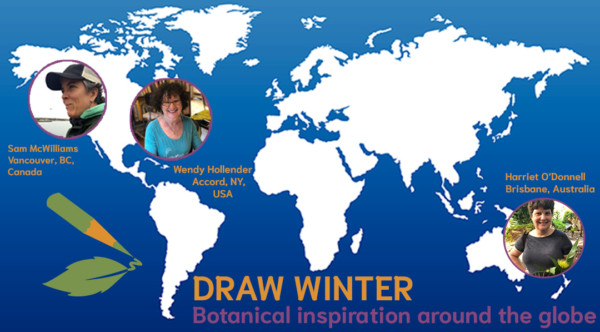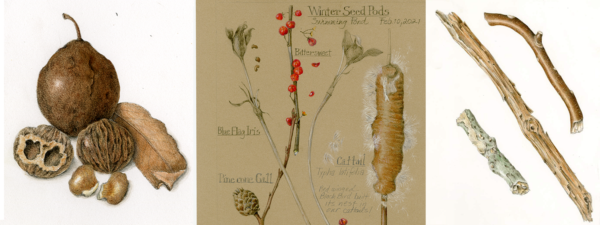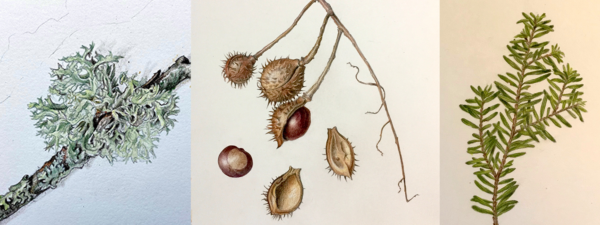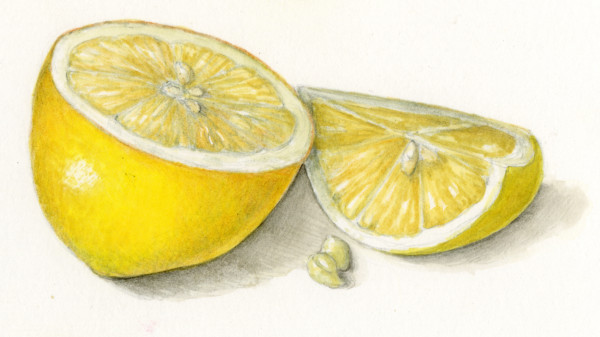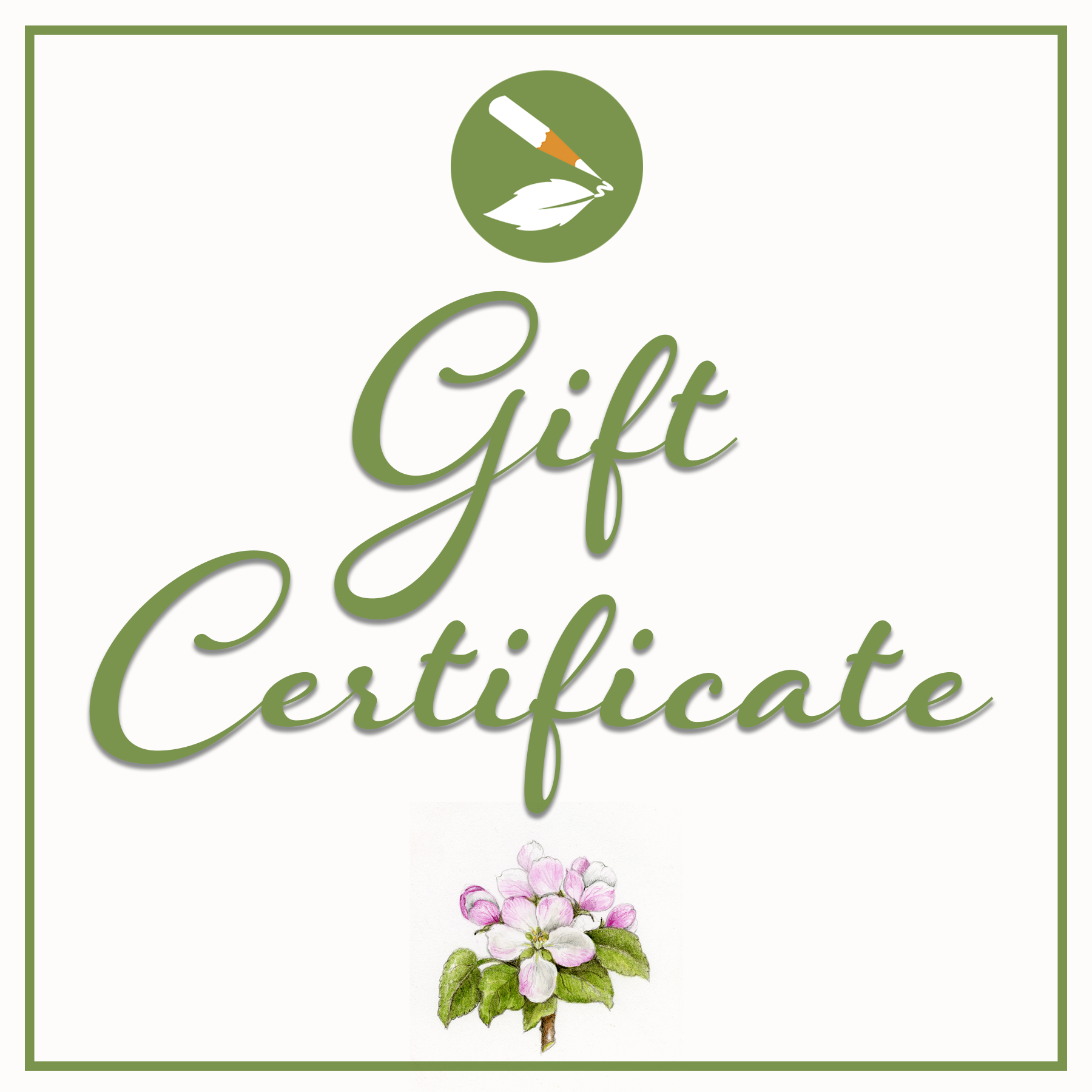Winter has begun! We love following nature all year long and noticing the differences in each season. If winter is cold where you are, it may be difficult to find live subjects. Now is a great time to draw things that will not wilt or decay, like branches, nuts, seeds, and pods. Looking for inspiration? See what our botanical artists are drawing around the globe!
Wendy Hollender, Accord, NY, USA
In winter, I look forward to studying branches, dormant buds, lichen, and leaf scars on branches, bark on trees, remaining seed pods, and dried curling leaves. Neutral colored pencils like Burnt Sienna, Dark Sepia, and Burnt Ochre are the most useful to achieve the desired brown shades of winter in the northeast. Magnolia trees have very cool dormant buds in winter. I can easily focus on a tree’s silhouette in the winter. A fun game is to try and identify a tree with only the limited information available in winter. If you want to learn how to ID trees, drawing the trees’ characteristics, winter is a great place to start. When you find a particular tree that talks to you, decide to follow that tree all year long to see the magic of its growth.
Sam McWilliams, Vancouver, BC, Canada
I like to walk the streets, gardens, and trails in BC, and select one buddy from the ground to take home and draw. Here are my drawings of a branch with lichen and moss, a fallen branch with drying chestnuts, and my Western Hemlock find from a stroll through the Conifers.
Harriet O’Donnell, Brisbane, Australia
Brisbane, Australia is currently in early summer and has a humid, subtropical climate with long, wet summers and dry, warm winters.
The first tree I drew was the blue jacaranda, Jacaranda mimosifolia, a South American native, that blankets our streets and parks with masses of mauve flowers in late October. When I was studying for exams at university we always knew exam time was near when the jacarandas bloomed.
The brilliant orange, red blooms of the African tulip tree, Spathodea campanulata, also caught my eye, and in my drawing, I included the flowers, buds and early seed pods. The trees flower all year round and are highly attractive to birds, bees, bats and butterflies that feed on the large quantities of nectar. Unfortunately, when the nectar ferments it is toxic to native Australian bees, killing them. Both the flowers I drew had a number of dead bees inside them. Their impact on our native bee population has been catastrophic and they are now considered noxious plants that should be completely removed from our urban landscape.
My third drawing is of Kigelia africana, an unusual African tree that bears spectacular sausage shaped fruits hanging down on long, cordlike stalks. After rain, clusters of large, velvety, red flowers appear that attract birds and bats. I included the buds, flowers, fruit and leaves. Although these three trees are not native to Australia, they are an important part of the history of Brisbane’s urban landscape.
How else can you find subjects and get inspired to draw this season?
Visit a florist and see what’s in their fridge
Draw citrus from your local grocery store (consider different species of citrus: lime, grapefruit, lemon, orange–a series of citrus drawings would look amazing!)
Draw your houseplants
Draw branches, seeds, nuts, or other non-perishables you collected in other seasons
